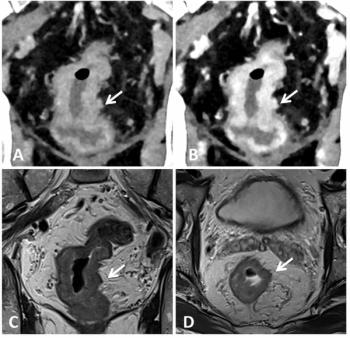
New MRI Methods Could Improve Treatment for Tremor and Parkinson’s
Three MRI techniques can help neuroradiologists more effectively target pea-sized area of the brain that affects movement with fewer side effects.
Newly developed MRI techniques can help neuroradiologists more effectively target and treat the area of the brain responsible for tremors in patients living with Parkinson’s disease, leading to better surgery outcomes and fewer side effects.
A research team, led by investigators from the University of Texas Southwestern (UTSW), has detailed three refined MRI methods neuroradiologists can use to precisely pinpoint the pea-sized region in the brain’s thalamus -- the ventral intermediate nucleas -- that is involved in movement. Providers use those MRI images with high-intensity focused ultrasound (HIFU) to burn away tissue causing movement problems.
These procedures, described in a study published Sunday in the journal
“The benefit for patients is what we will be better able to target the brain structures that we want,” said lead study author Bhavya R. Shah, M.D., assistant professor of radiology and neurological surgery at UTSW Peter O’Donnell Jr. Brain Institute. “And, because we’re not hitting the wrong target, we’ll have fewer adverse effects.”
UTSW plans to begin using these procedures with patients when it launches its Neuro High Intensity Focused Ultrasound Program this fall.
Based on National Institutes of Health data, up to 10 million American are affected by essential tremor, and Parkinson’s impacts more than 1 million people. A genetic link is suspected with both conditions, and medication is currently the first treatment option. However, roughly 30 percent of patients do not respond well to drugs, said the UTSW team. And, while MRI-guided HIFU procedures have also been used, to date, the targeting has been imprecise, Shah said, leading to adverse effects – problems walking and slurred speech – that can be temporary or permanent in 15 percent to 20 percent of cases.
MRI-guided HIFU is a preferable procedure, Shah explained, because it does not require any cutting, anesthesia, or implanted devices, but it has been challenging for neuroradiologists to target the ventral intermediate nucleas. Hitting the right spot is difficult, he said, because every brain is different.
To help neuroradiologists be more effective, Shah’s team described three refined MRI techniques that can lead to better delineation of the targeted tissue:
Diffusion tractography: This method is the most widely studied, and it creates precise brain images by taking into account the natural movement of water in tissues. Shah’s team plans to be part of a multi-center clinical trial, collaborating with the Mayo Clinic in Rochester, Minn., to test this method in patients.
Quantitative susceptibility mapping: This technique creates contrast in the image by detecting distortions in the magnetic field caused by substances, such as iron or blood.
Fast gray matter acquisition TI inversion recovery: Similar to a photo negative, this method turns the brain’s white matter dark and the gray matter white to provide greater detail in the gray matter.
Newsletter
Stay at the forefront of radiology with the Diagnostic Imaging newsletter, delivering the latest news, clinical insights, and imaging advancements for today’s radiologists.



























